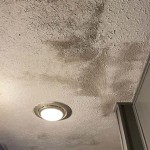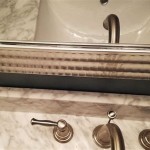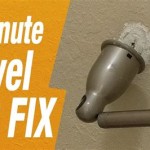Here's an article on how to switch out a bathroom fan:
How to Switch Out a Bathroom Fan
Replacing a bathroom fan is a common home improvement task that can significantly improve ventilation and reduce moisture buildup, preventing mold and mildew growth. While it might seem daunting, with careful planning and execution, most homeowners can successfully replace their existing bathroom fan. This article provides a comprehensive guide to the process, outlining the necessary tools, safety precautions, and step-by-step instructions.
Before beginning any electrical work, it is imperative to prioritize safety. Always disconnect the power to the bathroom circuit at the main electrical panel. This is usually done by switching off the circuit breaker that controls the bathroom lights and outlets. To ensure the power is completely off, test the existing fan with a non-contact voltage tester. If the tester indicates any voltage, double-check the correct circuit breaker and turn it off.
Gather all the necessary tools and materials before starting the removal process. This will save time and prevent unnecessary interruptions. The following items are generally required:
*New bathroom fan unit
*Screwdrivers (both flathead and Phillips head)
*Wire strippers/crimpers
*Wire connectors (wire nuts)
*Non-contact voltage tester
*Pliers
*Utility knife
*Ladder or step stool
*Safety glasses
*Work gloves
*Dust mask
*Measuring tape
*Pencil
*Drywall saw or utility knife (if modifications are needed)
Choosing the right replacement fan is crucial. Consider the following factors:
*CFM (Cubic Feet per Minute): This measures the fan's airflow capacity. A general rule of thumb is to have at least 1 CFM per square foot of bathroom area. For bathrooms larger than 100 square feet, consider a fan with a higher CFM rating.
*Sones: This measures the fan's noise level. Lower sones indicate a quieter fan. Aim for a fan with 1.0 sone or less for a quiet operation.
*Size and Design: Ensure the new fan's housing will fit within the existing opening. Consider the design and aesthetics to match the bathroom's decor.
*Features: Some fans come with additional features, such as built-in lights, humidity sensors, or timers. Evaluate which features are important based on individual needs.
Removing the Old Bathroom Fan
Begin by carefully removing the fan cover. Most covers are held in place by either spring clips or screws. Gently pull down on the cover or unscrew it to detach it from the fan housing. Set the cover aside.
Once the cover is removed, the fan motor assembly will be visible. There are typically screws or clips holding the motor assembly in place. Disconnect any electrical connectors or unplug the motor. Carefully remove the motor assembly from the housing.
The next step involves disconnecting the wiring. Before disconnecting any wires, take a picture or make a detailed diagram of how the wires are connected. This will serve as a reference when wiring the new fan. Use wire strippers to disconnect the wires from the old fan. Ensure that all wires are properly labeled with tape to maintain clarity.
With the wiring disconnected, the fan housing can be removed. The housing is usually attached to the ceiling joists with screws or nails. Use a screwdriver or pliers to remove the fasteners. In some cases, the housing may be secured with construction adhesive. If this is the case, use a utility knife to carefully cut the adhesive around the edges of the housing.
Carefully lower the old fan housing from the ceiling. It may be helpful to have a second person assist with this step, especially if the fan is heavy or difficult to maneuver. Once the housing is removed, clean the area around the opening to remove any dust or debris.
Installing the New Bathroom Fan
Prepare the new fan housing for installation. Depending on the model, some assembly may be required. Refer to the manufacturer's instructions for specific assembly steps. Ensure that all necessary components are securely attached to the housing.
Carefully lift the new fan housing into the opening in the ceiling. Align the housing with the ceiling joists and secure it with screws or nails. Ensure that the housing is level and flush with the ceiling. If necessary, use shims to achieve a level installation.
Connect the wiring to the new fan according to the wiring diagram. Use wire connectors (wire nuts) to securely connect the wires. Ensure that the correct wires are matched up based on the diagram and the labels on the wires. This typically involves connecting the black (hot) wire, the white (neutral) wire, and the green or bare copper (ground) wire. Double-check all connections to ensure they are tight and secure.
Carefully tuck the wires into the wiring compartment of the fan housing. Ensure that the wires are not pinched or damaged. Replace the cover on the wiring compartment.
Install the fan motor assembly into the housing. Align the motor assembly with the mounting brackets and secure it with screws or clips. Ensure that the motor assembly is properly seated and securely attached to the housing.
Final Steps and Testing
Attach the fan cover to the housing. Align the cover with the mounting points and secure it with spring clips or screws. Ensure that the cover is securely attached and flush with the ceiling.
Restore power to the bathroom circuit at the main electrical panel. Turn on the circuit breaker that controls the bathroom lights and outlets.
Test the new fan to ensure it is functioning properly. Turn on the fan switch and listen for the motor to start. Check for proper airflow and ensure that the fan is not making any unusual noises. If the fan does not turn on or if there are any issues, turn off the power and recheck the wiring connections.
Inspect the installation for any gaps or leaks around the fan housing. If necessary, apply caulk or sealant to seal any gaps and prevent drafts. Double check if the vent is properly connected to the outside. It should be free of nest or other debris.
Proper ventilation is essential for maintaining a healthy and comfortable bathroom environment. By following these steps, homeowners can successfully replace their existing bathroom fan and enjoy improved air quality and reduced moisture buildup.
Always refer to the manufacturer's instructions for specific installation guidelines and safety precautions. If unsure about any aspect of the installation, it is recommended to consult with a qualified electrician.

Replacing A Bath Fan Switch Electronic Timing Device Electrical

How To Wire Bathroom Fan And Light On Separate Switches Led Lighting Info

Prevent Mold With The Dewstop Fan Switch Diy Family Handyman

Exhaust Fan Wiring Single Switch Bathroom Light

How To Replace A Bathroom Fan With Pictures Wikihow

How To Wire Bathroom Fan And Light On Separate Switches Led Lighting Info

Bathroom Fan Control

How To Wire A Bathroom Fan And Light On Separate Switches

Replacing A Bathroom Light Fan Switch Connections Diynot Forums

How To Wire A Bathroom Fan And Light On Separate Switches 14 Step Guide Home Inspector Secrets
Related Posts







